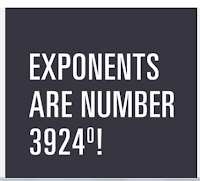 |
| Available on Amazon |
How to Move Beyond the Dance of Discipline in Today's Classrooms
Recommended for: All Staff
The theory of education is something we were all required to study in college. It sounded good in the book; it was great for discussion, and it made us feel smart! But that same theory tended to fall apart when you became the teacher of actual students. In addition to theory, what we really needed were practical suggestions for classroom management, effective ideas for dealing with children, and management methods that were classroom proven. Well, look no further; this is it!
In his introduction, MacKenzie states that, “Teachers can’t teach their academic subjects effectively until they can establish an effective environment for learning. Classroom management is simply too important to be neglected or handled ineffectively.” The book discusses effective classroom structure, your approach to teaching rules, how children learn your rules, and establishing consistent rules. Throughout the book, the author wants you to recognize the discipline you might be using that just doesn’t work. He concludes the book with how to develop a school wide guidance plan.
Setting Limits in the Classroom gives answers to your most testing behaviors that you may experience in the classroom. It is solid advice for fixing the way you interact and deal with students. It is also practical in that it gives various real life scenarios to reenact to practice classroom management and apply in your classroom. It offers firm, down-to-earth, and sensible solutions that effectively cut off students' attempts at negotiating, bargaining, and being belligerent towards the teacher. It offers many options to the unsuccessful extremes of permissiveness and rigid authority and all points in between. MacKenzie outlines no-nonsense methods for setting clear, firm limits supported by words and actions. The book is really a step-by-step manual that shows you how to create structure and methods that work, stop power struggles, motivate students, and even solve homework dilemmas. It is a must read, and I highly recommend it for middle school and high school teachers.
To peak your interest, here are a few quotes I especially liked from the book.
1) Your consequences will have their greatest impact when they are immediate, consistent, logically related, proportional, respectful, and followed by a clean slate.
2) Much of what we consider to be misbehavior in the classroom is actually limit testing or children’s attempts to clarify what we really expect.
3) When our words are consistent with our actions, we don’t need a lot of words or harsh consequences to get our message across.
4) When we ignore misbehavior, we are really saying, “It’s okay to do that. Go ahead. You don’t have to stop.”
This is an ideal book for a whole school study or new teacher development training! In the appendix is a study group guide that lists the objectives for each week as well as study-group discussion questions for each chapter. I have successfully used this book with many student teachers who have in turn used it as a discipline and classroom management guide.
------------------------------------------------------------------------------
 |
| $2.50 |










